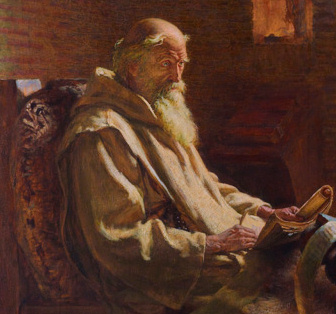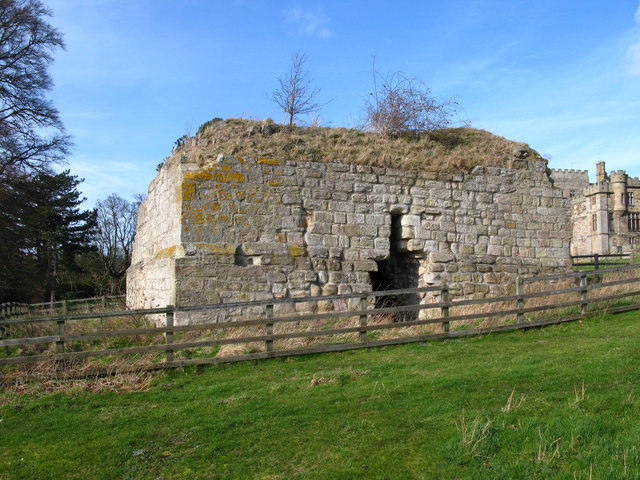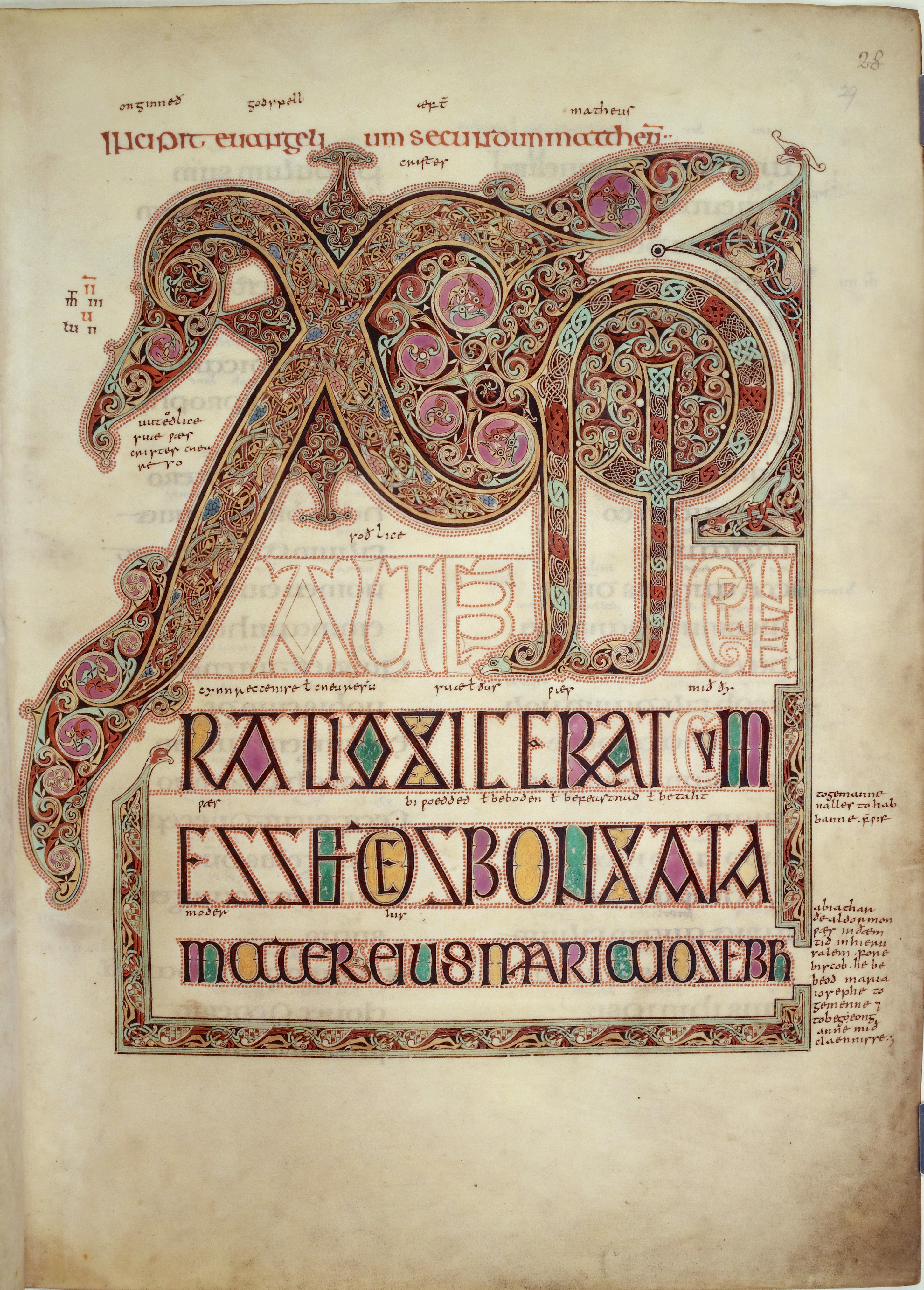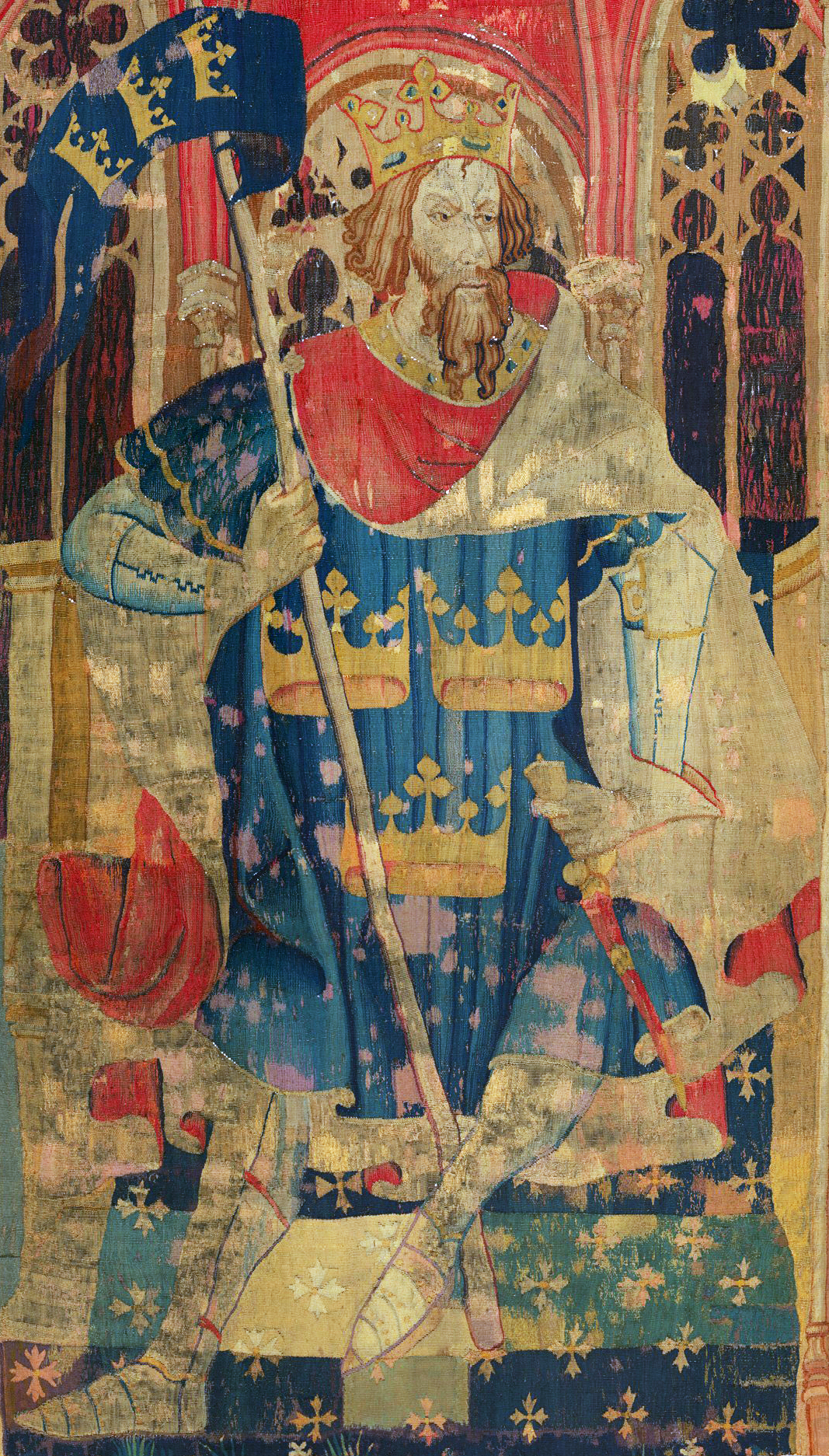|
Nesbit, Northumberland
Nesbit is a hamlet and former civil parish, now in the parish of Doddington, Northumberland, England. It was once the site of a medieval village. In maps published during the 17th to 19th centuries, the name of the settlement was variously spelled Nesbet, Nesbitt or Nesbit. In 1951 the parish had a population of 143. Nesbit is near the confluence of the Glen and Till rivers and the hypothesized location of one of King Arthur's battles against invading Anglo-Saxons. Latin documentation dating to 1242 lists "Dodington cum Nesebit membro suo" (Doddington with its member Nesbit) as among the holdings of Baron William de Vesci. In 1346, Edward III granted land at Nesbit to Thomas Grey (or Gray) of Heaton after the rebellion of the previous holder, John de Trollope. Documents note the existence in 1415 of a defensive tower at Nesbit belonging to his grandson, Thomas Grey. However, in a 1541 survey it was observed that: :At Nesebytte (Nesebitt) there was a towre of thinheritaunce o ... [...More Info...] [...Related Items...] OR: [Wikipedia] [Google] [Baidu] |
Civil Parish
In England, a civil parish is a type of Parish (administrative division), administrative parish used for Local government in England, local government. It is a territorial designation which is the lowest tier of local government below districts of England, districts and metropolitan and non-metropolitan counties of England, counties, or their combined form, the Unitary authorities of England, unitary authority. Civil parishes can trace their origin to the ancient system of Parish (Church of England), ecclesiastical parishes, which historically played a role in both secular and religious administration. Civil and religious parishes were formally differentiated in the 19th century and are now entirely separate. Civil parishes in their modern form came into being through the Local Government Act 1894, which established elected Parish councils in England, parish councils to take on the secular functions of the vestry, parish vestry. A civil parish can range in size from a sparsely ... [...More Info...] [...Related Items...] OR: [Wikipedia] [Google] [Baidu] |
Thomas Grey (chronicler)
Sir Thomas Grey or Gray (d. before 22 October 1369) of Heaton Castle in the parish of Cornhill-on-Tweed, Northumberland, was the son of Sir Thomas Grey, an eminent soldier in the Anglo-Scottish wars in the reigns of Edward I and Edward II, and his wife, Agnes de Bayles. He was the author of the English chronicle, the '' Scalacronica''. Family Thomas Grey, author of the '' Scalacronica'', was the son of Sir Thomas Grey of Heaton (d. before 12 March 1344) and his wife Agnes de Bayles. Grey had four sisters, who according to Andy King married John de Eure, William de Felton, William Heron, and Gerard Salvayn. Grey's father served almost continuously during the Anglo-Scottish wars in the reigns of Edward I and Edward II. In May 1297 Grey's father was left for dead on the field when William Wallace attacked Lanark, but recovered, and was active in various campaigns in the ensuing years. In May 1303 the elder Grey was captured by the Scots at Melrose Abbey, and after his relea ... [...More Info...] [...Related Items...] OR: [Wikipedia] [Google] [Baidu] |
Nisbet, Scottish Borders
Nisbet is a small hamlet on the B6400, in Roxburghshire, along the River Teviot, in the Scottish Borders area of Scotland. It is located north of Jedburgh and south of Roxburgh. The village has several Nisbet location names: Nisbet, East Nisbet, West Nisbet, Nisbetmill, Upper Nisbet, and Upper Nisbet Moor. However, none of these are connected to the family of Nisbet of that Ilk, who built Nisbet House in Berwickshire. There was a Nisbet family located a short distance from this Nisbet village at Cessford Burn from 1665 to 1822. The Rev. Samuel Rutherford was born in the village of Nisbet about 1600. See also *Nisbet House *List of places in the Scottish Borders ''Map of places in the Scottish Borders compiled from this list'':See the list of places in Scotland for places in other counties. This list of places in the Scottish Borders includes towns, villages, hamlets, castles, golf courses, historic ho ... External links A Hog-backed and two-coped monuments, in Nisbet ... [...More Info...] [...Related Items...] OR: [Wikipedia] [Google] [Baidu] |
Yeavering
Yeavering () is a hamlet in the north-east corner of the civil parish of Kirknewton in the English county of Northumberland. It is located on the River Glen at the northern edge of the Cheviot Hills. It is noteworthy as the site of a large Anglo-Saxon period settlement that archaeologists have interpreted as being one of the seats of royal power held by the kings of Bernicia in the 7th century CE. Evidence for human activity in the vicinity has been found from the Mesolithic, Neolithic and Bronze Age periods, although it would be in the Iron Age that significant settlement first occurred at Yeavering. In this period, a heavily inhabited hillfort was constructed on Yeavering Bell which appears to have been a major settlement centre at the time. According to Book 2 Chapter 14 of the '' Ecclesiastical History'' of the Venerable Bede (673–735), in the year 627 Bishop Paulinus of York accompanied the Northumbrian king Edwin and his queen Æthelburg to their royal vill (the L ... [...More Info...] [...Related Items...] OR: [Wikipedia] [Google] [Baidu] |
Ford, Northumberland
Ford is a small village and civil parish in Northumberland, England, about from Berwick-upon-Tweed. The parish also includes Etal. History before 1513 Very little is known of the history of the area before the Norman Conquest in the 11th century, but Bronze Age rock carvings in the area suggest that there might have been some settlement at that time. It is thought the shallow crossing of the River Till (a ford) which gave the village its name, was probably a crossing place for monks and nuns travelling between the monasteries at Iona and Lindisfarne during the Anglo-Saxon period. Written records for Ford begin after the Norman Conquest in 1066 and the introduction of the manorial system when the manor of Ford was held by the Heron family. A substantial stone castle was built at Ford in 1287, to protect the manor from the constant border warfare waged between the Scots and the English during the medieval period. South-west of the castle are the remains of the Parson's ... [...More Info...] [...Related Items...] OR: [Wikipedia] [Google] [Baidu] |
Battle Of Humbleton Hill
The Battle of Holmedon Hill or Battle of Homildon Hill was a conflict between English and Scottish armies on 14 September 1402 in Northumberland, England. The battle was recounted in Shakespeare's ''Henry IV, part 1''. Although Humbleton Hill is the modern name of the site, over the centuries it has been variously named Homildon, Hameldun, Holmedon, and Homilheugh. Background During the time leading to the repudiation of the Truce of Leulinghem, both Kingdoms began to raid the other. On 22 June 1402, a small force backed by the Scots government, returning from one such raid, was attacked and defeated by George Dunbar, the Earl of March's son, at the Battle of Nesbit Moor, at which no quarter was given. Archibald Douglas, 4th Earl of Douglas, arguably the most militarily powerful man in Scotland, and a key part of the Duke of Albany's administration, used the pretext of Nesbit Moor to lead a punitive expedition into England. With Murdoch of Fife, Albany's son, Douglas's a ... [...More Info...] [...Related Items...] OR: [Wikipedia] [Google] [Baidu] |
Township (England)
In England, a township (Latin: ''villa'') is a local division or district of a large parish containing a village or small town usually having its own church. A township may or may not be coterminous with a chapelry, manorialism, manor, or any other minor area of local administration. The township is distinguished from the following: *Vill: traditionally, among legal historians, a ''vill'' referred to the tract of land of a rural community, whereas ''township'' was used when referring to the tax and legal administration of that community. *Chapelry: the 'parish' of a chapel (a church without full parochial functions). *Tithing (country subdivision), Tithing: the basic unit of the medieval Frankpledge system. 'Township' is, however, sometimes used loosely for any of the above. History In many areas of England, the basic unit of civil administration was the parish, generally identical with the Parish#Ecclesiastical parish, ecclesiastical parish. However, in some cases, particularly ... [...More Info...] [...Related Items...] OR: [Wikipedia] [Google] [Baidu] |
Thomas Grey (1384–1415)
Sir Thomas Grey (30 November 1384 – 2 August 1415), of Heaton Castle in the parish of Norham, Northumberland, was one of the three conspirators in the failed Southampton Plot against King Henry V in 1415, for which he was executed. Family Sir Thomas Grey, born 30 November 1384 in 'le Midyllgathouse’ at Alnwick Castle, seat of the Percys, Earls of Northumberland, came from a family long prominent among the nobility in the border region of Northumberland. He was the eldest son and heir of Sir Thomas Grey (135926 November 1400) of Heton near Norham, Northumberland, by his wife, Joan Mowbray (d. 1410), sister of Thomas de Mowbray, 1st Duke of Norfolk, and daughter of John de Mowbray, 4th Baron Mowbray (d. 17 June 1368), and Elizabeth de Segrave, daughter and heiress of John de Segrave, 4th Baron Segrave. Through his mother, a granddaughter of Margaret, Duchess of Norfolk (d. 1399), Sir Thomas Grey was a descendant of King Edward I. His paternal grandparents were the soldier an ... [...More Info...] [...Related Items...] OR: [Wikipedia] [Google] [Baidu] |
Anglo-Saxons
The Anglo-Saxons were a cultural group who inhabited England in the Early Middle Ages. They traced their origins to settlers who came to Britain from mainland Europe in the 5th century. However, the ethnogenesis of the Anglo-Saxons happened within Britain, and the identity was not merely imported. Anglo-Saxon identity arose from interaction between incoming groups from several Germanic tribes, both amongst themselves, and with indigenous Britons. Many of the natives, over time, adopted Anglo-Saxon culture and language and were assimilated. The Anglo-Saxons established the concept, and the Kingdom, of England, and though the modern English language owes somewhat less than 26% of its words to their language, this includes the vast majority of words used in everyday speech. Historically, the Anglo-Saxon period denotes the period in Britain between about 450 and 1066, after their initial settlement and up until the Norman Conquest. Higham, Nicholas J., and Martin J. Ryan. ''The An ... [...More Info...] [...Related Items...] OR: [Wikipedia] [Google] [Baidu] |
Doddington, Northumberland
The village and parish of Doddington are on the east side of the Milfield Plain, nearly 3 miles north of the town of Wooler, in the county of Northumberland, England. Notable buildings in Doddington include Doddington Hall and the Anglican church of St Mary and St Michael, which was built in the 18th century on the site of an original 12th-century place of worship. Wooler Golf Course is also near Doddington. History and cultural significance In 1734, the village was described in George Mark's ''Survey of a Portion of Northumberland'' as "remarkable for its largeness, the badness of its houses and low situation, and perhaps for the greatest quantities of geese of any in its neighbourhood". At about the same time, the tune ''Dorrington'', also known as ''Dorrington Lads'', was written down in the William Dixon manuscript. Having 14 strains, it is the most complex and elaborate of the pieces in that early source for Northumbrian music. The last tune played, on his deathbed, by ... [...More Info...] [...Related Items...] OR: [Wikipedia] [Google] [Baidu] |
King Arthur
King Arthur ( cy, Brenin Arthur, kw, Arthur Gernow, br, Roue Arzhur) is a legendary king of Britain, and a central figure in the medieval literary tradition known as the Matter of Britain. In the earliest traditions, Arthur appears as a leader of the post-Roman Britons in battles against Saxon invaders of Britain in the late 5th and early 6th centuries. He appears in two early medieval historical sources, the '' Annales Cambriae'' and the '' Historia Brittonum'', but these date to 300 years after he is supposed to have lived, and most historians who study the period do not consider him a historical figure.Tom Shippey, "So Much Smoke", ''review'' of , ''London Review of Books'', 40:24:23 (20 December 2018) His name also occurs in early Welsh poetic sources such as '' Y Gododdin''. The character developed through Welsh mythology, appearing either as a great warrior defending Britain from human and supernatural enemies or as a magical figure of folklore, sometimes assoc ... [...More Info...] [...Related Items...] OR: [Wikipedia] [Google] [Baidu] |
River Till, Northumberland
The River Till is a river of north-eastern Northumberland. It is a tributary of the River Tweed, of which it is the only major tributary to flow wholly in England. Upstream of the locality of Bewick Bridge, 8.5 km to the southeast of Wooler the river is known as the River Breamish. It rises on Comb Fell in the Cheviot Hills. Its tributaries include Wooler Water, which originates in the Cheviots, and the River Glen in Glendale. It meets the Tweed a mile to the west of Twizell Bridge, 4 km downstream of Coldstream. According to local folklore: ::::''Tweed said to Till'' ::::"What gars ye rin sae stil?" ::::Says Till to Tweed, ::::"Though ye rin wi' speed ::::And I rin slaw ::::Whar ye droon yin man ::::I droon twa"'' Recent environmental projects have included an attempt to conserve the native brown trout. References External links A walk along the River Till bank from Etal to Tiptoe* Map sources for: - source of the Breamish and - confluence with the Tweed ... [...More Info...] [...Related Items...] OR: [Wikipedia] [Google] [Baidu] |






